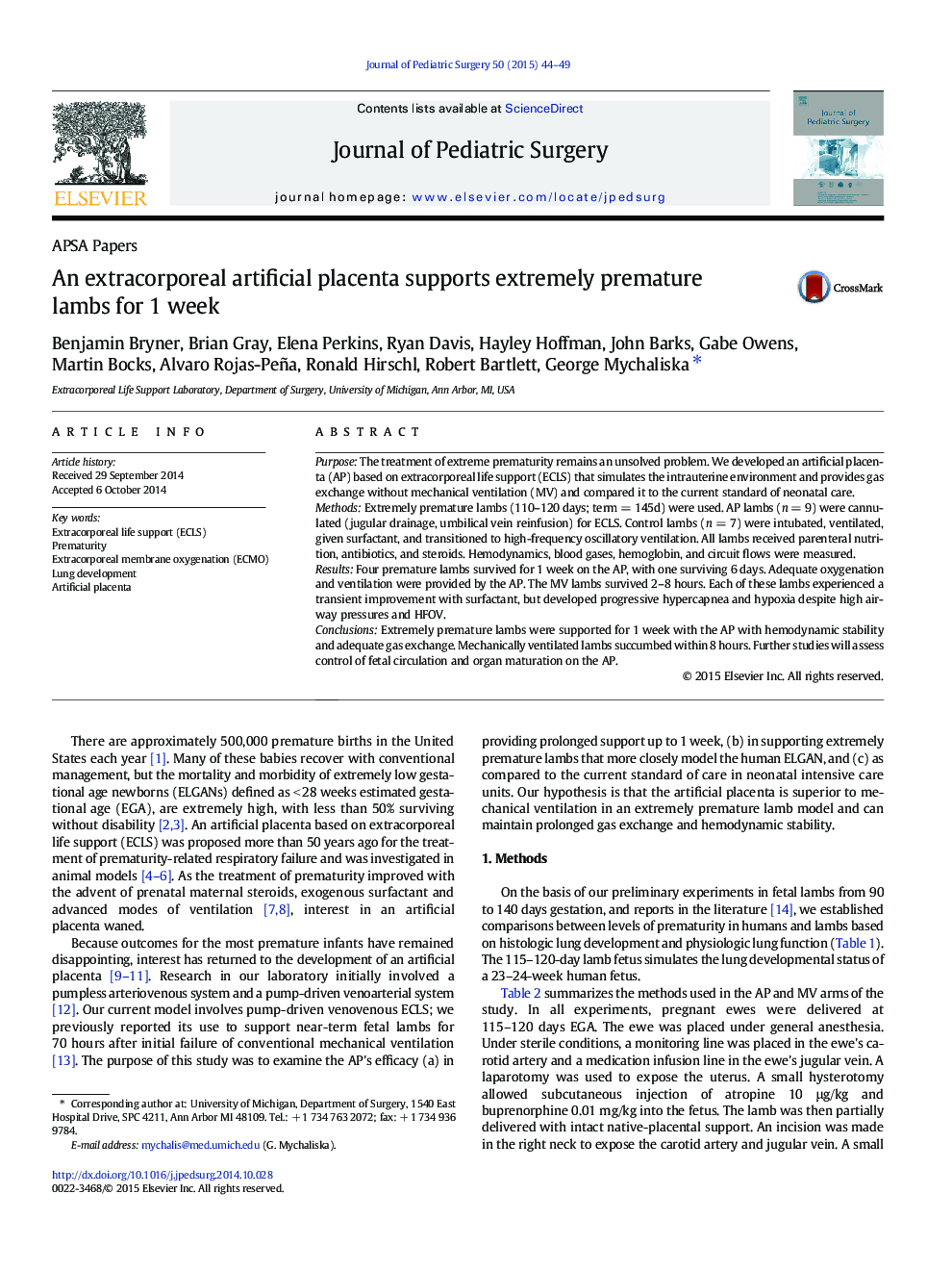| Article ID | Journal | Published Year | Pages | File Type |
|---|---|---|---|---|
| 4155198 | Journal of Pediatric Surgery | 2015 | 6 Pages |
PurposeThe treatment of extreme prematurity remains an unsolved problem. We developed an artificial placenta (AP) based on extracorporeal life support (ECLS) that simulates the intrauterine environment and provides gas exchange without mechanical ventilation (MV) and compared it to the current standard of neonatal care.MethodsExtremely premature lambs (110–120 days; term = 145d) were used. AP lambs (n = 9) were cannulated (jugular drainage, umbilical vein reinfusion) for ECLS. Control lambs (n = 7) were intubated, ventilated, given surfactant, and transitioned to high-frequency oscillatory ventilation. All lambs received parenteral nutrition, antibiotics, and steroids. Hemodynamics, blood gases, hemoglobin, and circuit flows were measured.ResultsFour premature lambs survived for 1 week on the AP, with one surviving 6 days. Adequate oxygenation and ventilation were provided by the AP. The MV lambs survived 2–8 hours. Each of these lambs experienced a transient improvement with surfactant, but developed progressive hypercapnea and hypoxia despite high airway pressures and HFOV.ConclusionsExtremely premature lambs were supported for 1 week with the AP with hemodynamic stability and adequate gas exchange. Mechanically ventilated lambs succumbed within 8 hours. Further studies will assess control of fetal circulation and organ maturation on the AP.
